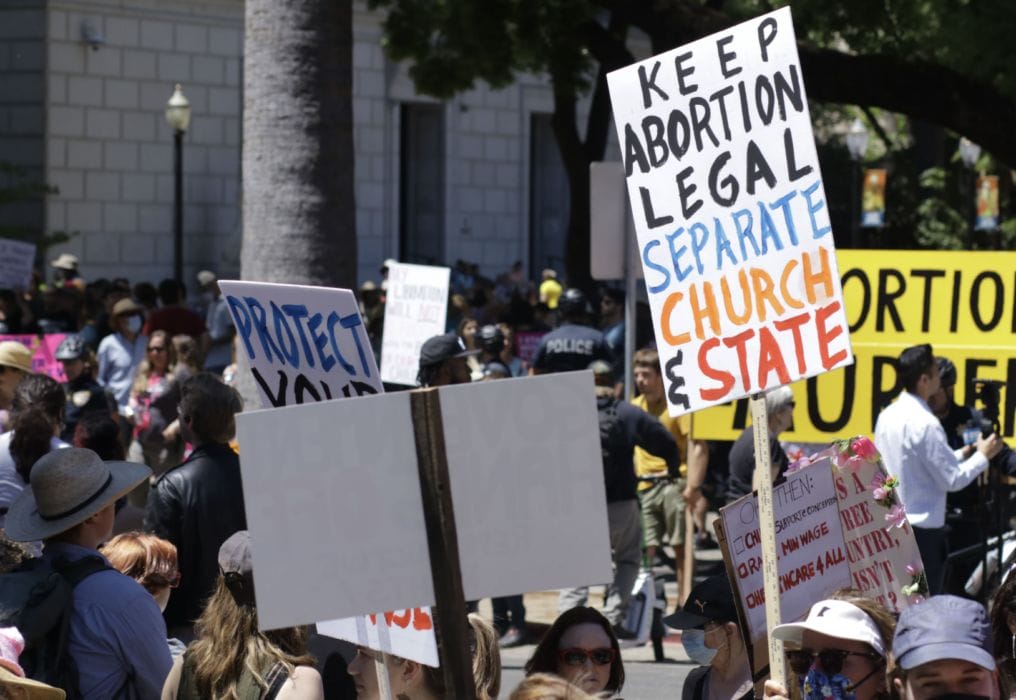The following is a news analysis.
The past few years are riddled with examples of major media outlets relying on anonymous sources for “blockbuster” stories— only to have the information be proven wrong.
Yet there’s been little to no accountability.
Most recently it’s the cacophony of admissions by media, including The Washington Post, that falsely declared (early and often) the Covid-19 lab origin theory was “debunked.” They received ample support in for the misinformation from Facebook, Twitter, Google and public health officials such as Dr. Anthony Fauci.
Before that, there were notable corrections by NBC, The New York Times and The Washington Post on another major story. The news outlets had to correct their false reporting about Trump attorney Rudy Giuliani. The articles all claimed that prior to 2019 political scandals involving the U.S., Russia and Ukraine, Giuliani and/or the conservative news channel One America News had received a “former warning from the FBI about Russian disinformation.” However, story revisions in May later stated that Giuliani and One America News did not receive such so-called “defensive briefings,” after all.
Looking at the news organizations and bylines responsible for the errors, we can see repeat offenders. Some of the same players have made the same sorts of egregious reporting mistakes over and over again, yet go on to make more as if no lessons were learned from the previous. And as I’ve documented, when the media gets caught having publicized the worst kind of false information, instead of issuing a mea culpa and apologies, the offenders often double down and revise the original terms of the story to make it seem as if the false information didn’t matter at all.
It’s worth mentioning that three of the journalists involved in the mistaken Giuliani reporting, Maggie Haberman and Ken Vogel of the New York Times and Ken Dilanian at NBC, appeared years ago among the journalists highlighted in embarrassing internal emails that called their objectivity into question.
As The Intercept reported in October 2016,
One January 2015 strategy document — designed to plant stories on [Hillary] Clinton’s decision-making process about whether to run for president — singled out reporter Maggie Haberman, then of Politico, now covering the election for the New York Times, as a “friendly journalist” who has “teed up” stories for them in the past and “never disappointed” them.
Vogel also got caught in an embarrassing position while working at Politico. He sent at least one advance draft of his story to Democratic officials.
In September 2014, the The Intercept reported that while Dilanian worked as a national security reporter for the Los Angeles Times, he:
…routinely submitted drafts and detailed summaries of his stories to CIA press handlers prior to publication…Email exchanges…show that Dilanian enjoyed a closely collaborative relationship with the [CIA], explicitly promising positive news coverage and sometimes sending the press office entire story drafts for review prior to publication.
What used to be considered exclusionary behavior for journalism jobs has come to be viewed as qualifications. Haberman and Vogel got promoted from Politico to the New York Times, and Dilanian from the Los Angeles Times to NBC, where all have gone on to make more errors.
Aug. 31, 2017: Dilanian reported the false story that a Trump official’s notes about a meeting with a Russian lawyer include the word “donation,” as if there were discussions about Russians making possibly illegal campaign contributions. NBC later corrected the report to reflect that the word “donation” didn’t appear after all, but still claimed the word “donor” was in the notes. Later, Politico reported the word “donor” wasn’t in the notes, either. Who was the source that gave the misinformation to Dilanian about the notes?
Sept. 7, 2017: Haberman reported that Nancy Pelosi had called President Trump about an immigration issue. Haberman’s source proved wrong: Trump actually made the call to Pelosi.
Jan 9, 2019: Vogel and Haberman had to correct a story in which they falsely claimed Trump adviser Paul Manafort had wanted to share polling data with a Russian oligarch close to Russia President Putin. Instead, the Times said in its correction, Manafort actually asked his associate Rick Gates to give polling data to Ukrainian oligarchs –not the Russian Deripaska. Who gave the Times the false information?
May 29, 2019: Haberman tweeted out a statement claiming to have confirmed what she called an “excellent scoop” by the Wall Street Journal. The story said the Navy used a tarp to cover the U.S.S. John S. McCain so that President Trump wouldn’t see it on his visit to Yokosuka, Japan. But the main components of the story turned out to be untrue. So who was the source that Haberman “confirmed” the information with?
July 6, 2019: Haberman was one of the reporters that had long reported, as if fact, the Hillary Clinton claim that a total of 17 American intelligence agencies concluded that Russia orchestrated election-year attacks to help get Trump elected. But only three or four agencies, not 17, had officially done so.
Aug. 29, 2019: Dilanian corrected a false report he’d disseminated claiming that starting October 29 of that year, “children born to U.S. service members outside of the U.S. will no longer be automatically considered citizens. Parents will have to apply for citizenship for their the [sic] children in those situations.” From whom did Dilanian get the false information?
April 6, 2020: Haberman was bylined on a New York Times report that falsely claimed “Trump has seized on [hydroxychloroquine] as a miracle cure” for Covid-19. In fact, the day before the article was published, the president repeatedly qualified his support for hydroxychloroquine and did not call it a miracle cure. “It may work, and it may not work. But if it doesn’t work, it’s nothing lost by doing it,” said Trump at the April 5 media availability. He also stated, “in case it does work, we want to have it,” and “Now, it may not work, in which case, Hey, it didn’t work. It may work, in which case it’s going to save a lot of lives. Now, a lot of people say…it has a profound effect. Well, maybe it does and maybe it doesn’t.”
Who are the sources responsible for spreading disinformation and why are they doing it? Why are major media outlets so willing to publish it? And why do reporters protect the bad sources after the false information is exposed?
I suspect the answer lies in the fact that news has been reimagined and redefined. It is now used as a tool to promulgate narratives and propaganda. This explains why so many in the media do not seem to be on a mission to accurately reflect facts. They’re in position to spread a particular narrative or view that benefits certain powerful interests. Likewise, their goal is to controversialize or eliminate contrary facts, views and science.
So when the information they report proves wrong, the publishers of the bad information and their sources are not sorry— after all, their mission was accomplished. And they know that if there’s a correction, far fewer people will read and believe it than read and believed the original false story.
The worst part, perhaps, is that others in the media and many in the public seem blind to the lessons here, too. When each new “blockbuster” false story, often sourced to supposedly well-placed anonymous people, appears in these publications, much of the rest of the media picks up the information and amplifies the error. And the public— often because they want to believe the material— circulates it online.
The news organizations committing the errors should better explain how they’ve gotten the facts so wrong. They should own up to the lapses in reporting and publicly disclose how they have changed their practices and policies to prevent a repeat. They owe it to the public to expose the sources who have planted false information. Obviously, they must steer clear of any such source in the future.
But in the end, if the violators won’t clean up their own act, then it’s up to the rest of us to act accordingly. If nothing else, we should look skeptically at the reporting coming from places that have so frequently told us the wrong story.
For a podcast on the above topic, listen here starting Fri. June 18 at 4pm.




Is there anywhere I can get a list of all the fake news stories of the last 5 yrs? Hannity says you have a list of over 150.